Exploring the German-Jewish Relationship
Understanding the World of Multi-Culturalism
First World Tourism Network Tour to Berlin, Germany
Join us on our first WTN branded tour to the German capital, Berlin, exploring this vibrant city from the eyes of a Jewish person. Germany and the Jews had a unique relationship in the last 500 years.
25 AUGUST – 02 SEPTEMBER, 2024
Rabbi Dr. Peter Tarlow, President of the World Tourism Alliance and world-famous author, and Juergen Steinmetz, a native German and Chairman of the World Tourism Network, are looking forward to hosting you as we explore the intricacies of German-Jewish relations over the last centuries.
This culturally sensitive tour is kosher style and provides our participants with a culinary taste of German and local Jewish foods and a cultural sampling of Germany’s capital and most famous city.
The tour includes visits to Berlin’s most historic and famous locations, opportunities to experience German Jewish life past and present, lectures on German and Jewish history and current events, and cultural and culinary encounters with Germans and its Jewish population.
The tour includes
- Welcome cocktail
- 7 nights at Berlin’s Pullman Berlin Schweizerhof Hotel (or the equivalent)
- Full American breakfast and dinners, including soft drinks or beer (2 per person per night)
- Ground transportation with a native German speaker
- A Berlin travel pass to explore the city on your own during free time
- A pass to access most known attractions and museums
- Dialogues and cultural events
- Lectures by German and Jewish leaders
- Friday Night German Shabbat Experience
Some of the sights to be visited include
- The Berlin Holocaust Memorial
- The German Parliament, formerly Reichstag
- The Brandenburg Gate
- Visit to Berlin’s Bohemian District
- Visit to a Berlin Refugee Center
- Synagogue tour
- Boat tour
- The Berlin Jewish Museum
- The Sachsenhausen Concentration Camp Memorial
- The Charlottenburg Palace
- And many more
Tour Price
Double Occupancy
US$2999.00
*air arrangements on your own
Single Occupancy
US$ 3499.00
Smallprint:
- Nonrefundable deposit per person with reservation: $1000.00
- Full payment by July 15, 2024
- Nonrefundable on or after August 1
- Minimum participation: 14. If this number cannot be reached, this tour may be canceled with a full refund.
Registration Closed
More information
Rabbi Peter Tarlow
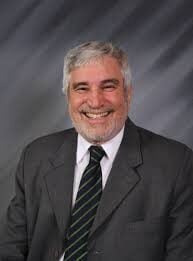
Rabbi Peter Tarlow, Ph.D of College Station, is the former chairman of the Texas Holocaust and Genocide Commission.
He is a lecturer at Texas A&M University Medical School. He previously served as the Rabbi for the Texas A&M Hillel for thirty years and now holds the title of Rabbi Emeritus. He is also the director of the Center for Latino-Jewish Relations, which educates the Hispanic and Jewish communities about their shared history and lineage—lecturing worldwide. He also writes a monthly column for the Bryan Eagle and a weekly bilingual Torah commentary available through various organizations.
He is the founder and president of Tourism & More, Inc., and the past president of the Texas Chapter of the Travel and Tourism Research Association.
He is fluent in Hebrew, English, Spanish, and Portuguese. He is a world-renowned speaker and expert specializing in the impact of crime and terrorism on the tourism industry, event and tourism risk management, and economic development.
Rabbi Tarlow has consulted on tourism development and security for the Hoover Dam, the Bureau of Reclamation, U.S. Customs and Border Protection, the Salt Lake City 2002 Winter Olympic Games, the U.S. National Park Service, the Smithsonian Institution Office of Protection Services, the Center for Disease Control, the Rio de Janeiro 2014 World Cup Games, the United Nations World Tourism Organization, and the Panama Canal Authority.
He has contributed to numerous articles and books. Still, he is the sole author of several books, including Twenty Years of Tourism Tidbits: The Book, Event Risk Management and Safety, and Tourism Security: Strategies for Effective Managing Travel Risk and Safety. Rabbi Tarlow received a Bachelor of Arts in Spanish literature from George Washington University. He was ordained as a Reform Rabbi and earned a Master of Arts in Hebrew literature from Hebrew Union College. He received a Doctorate in sociology from Texas A&M University.
Juergen Steinmetz

Juergen Steinmetz is the founder and CEO of TravelNewsGroup and the publisher of eTurboNews, one of the oldest and most influential publications in the travel and tourism industry.
Born and raised in Germany, he came to the United States in 1982 and lived most of his life on the Island of Oahu in Hawaii. He recently moved to Dallas and is now a resident of Texas.
Juergen has been working in the travel and tourism industry since 1978. His first job was for Hapag Lloyd Travel in Duesseldorf, Germany.
He speaks fluent German and English.
What to expect
- Experience Berlin’s city life
- See museums
- Enjoy the food, beer, and entertainment
- Learning and understanding the history
- The Jewish past
- The current reality
- The young and the old

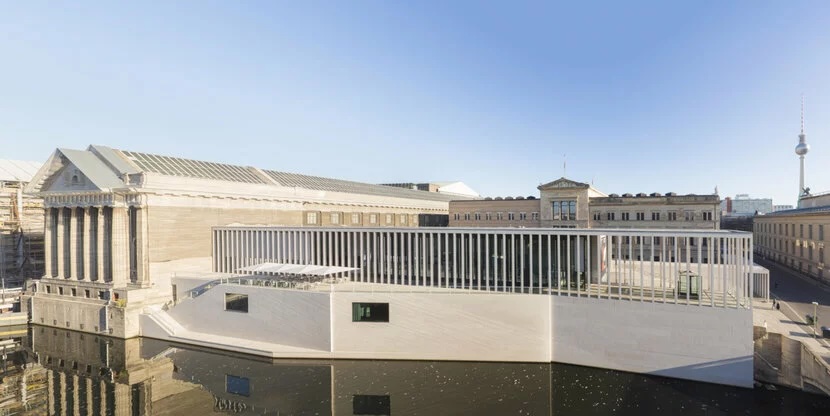
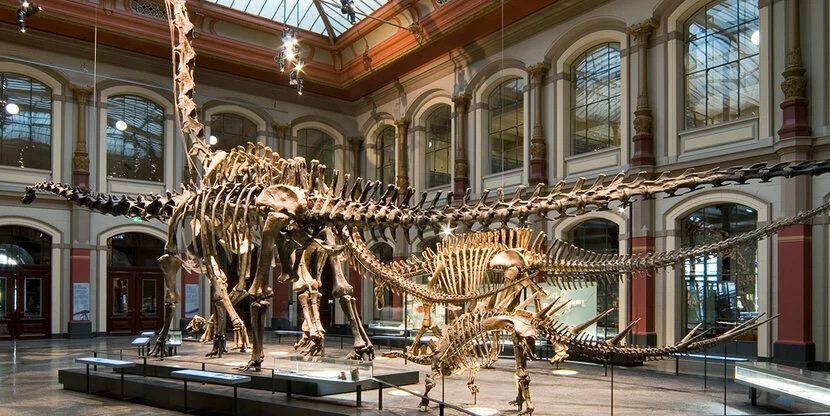
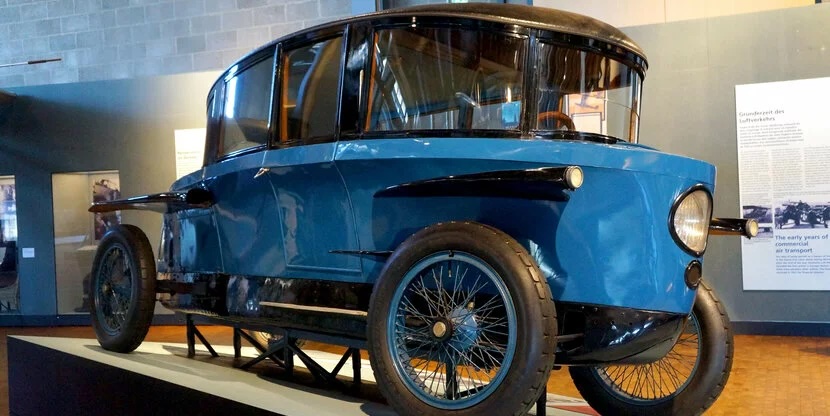
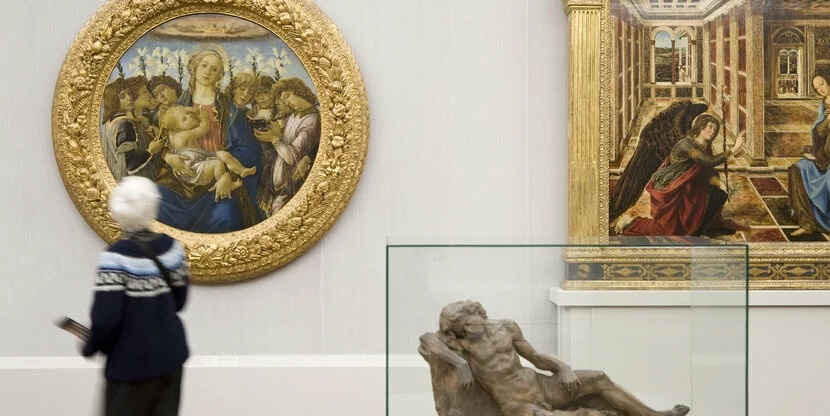
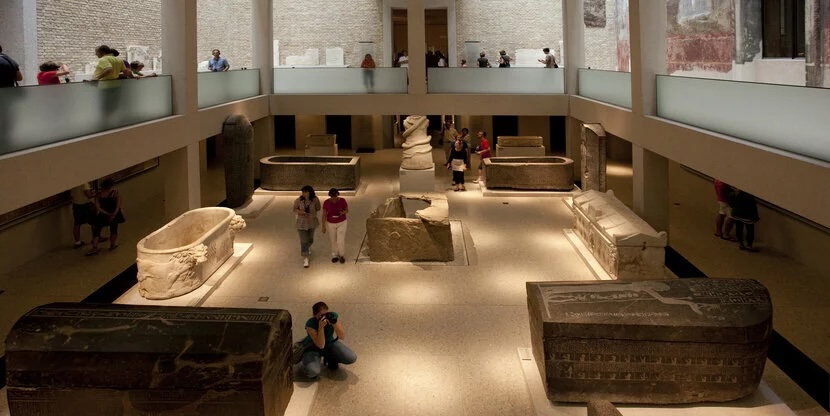


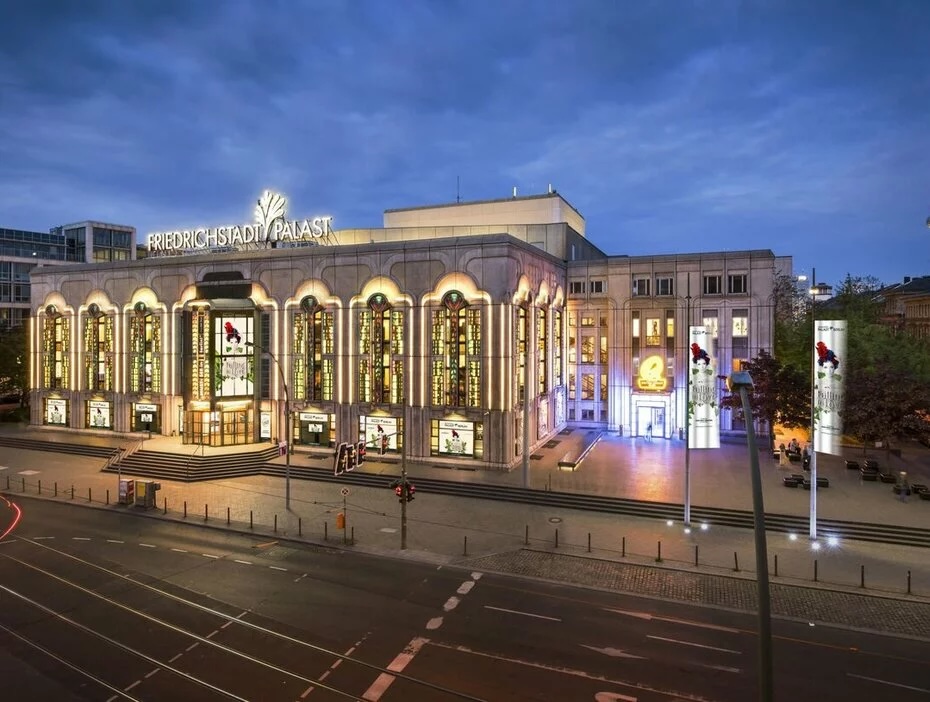


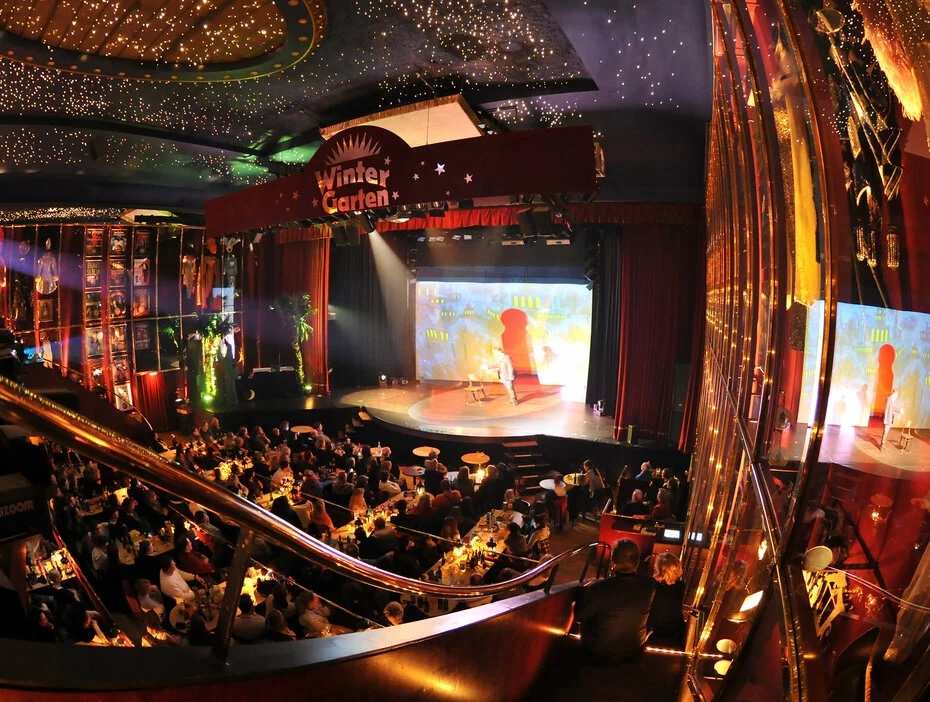

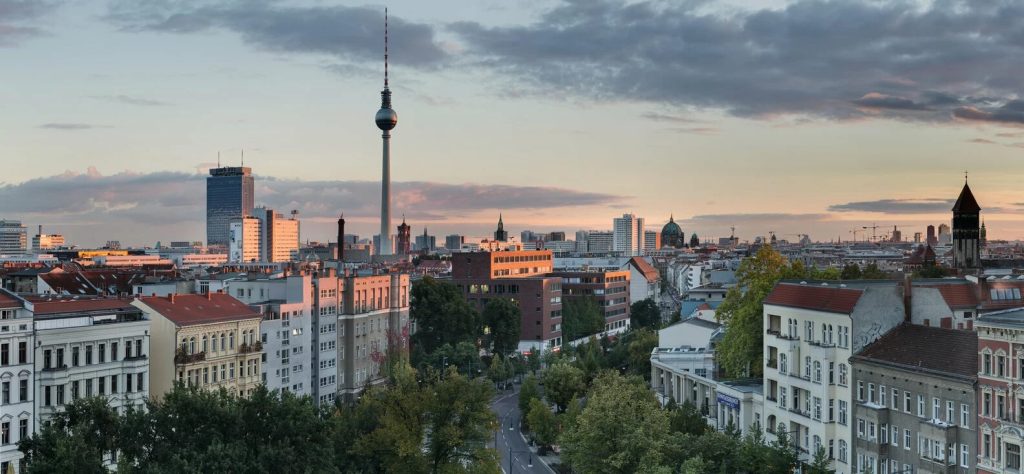
Signs of Jewish History in Berlin
Today, signs of Berlin’s Jewish history are everywhere. There are streets named after such famous Jews as Moses Mendelsohn, Baruch Spinoza, Rosa Luxemburg, Heinrich Heine, and Gustave Mahler. There are numerous Holocaust memorials throughout the city, with the Memorial to the Murdered Jews of Europe in the center of Berlin recognized as the official German Holocaust memorial. An underground information center documents the Holocaust.
Seven synagogues operate, and Jewish preschools and a high school are also present. In 2003, New York-based Touro College opened the first Jewish-oriented college.
Berlin is home to Germany’s official memorial to the Holocaust. The memorial was opened in 2005 and includes 2,700 concrete blocks of varying heights, representing the coffins of those individuals murdered in Nazi concentration camps. The memorial rests on a large open piece of land in the center of the city, adjacent to the mound underneath which Adolf Hitler spent his last days and committed suicide in his underground bunker.
Included in the many Holocaust Memorials scattered throughout Berlin are the Missing House graphic at Grosse Hamburger Strasse 15/16, which lists the names of former residents; a red sandstone monument at Rosenstrasse 2/4, which pays tribute to the protests of non-Jewish women over the capture of their Jewish husbands; and the Abandoned Room at Koppenplatz, which depicts an overturned bronze chair to remember those Jews taken on Kristallnacht.
Other areas of interest include Bebelplatz, site of the May 10, 1933, book burnings; Track 17 in the Wilmsersdorf district, a commemoration to the more than 50,000 Jews that were deported from Grunewald Station, which features plaques next to the railroad tracks that list every transport between 1941 and 1945, the number of people, and their destination; and the Israeli Embassy, which hosts six stone pillars at its entrance to symbolize the 6 million Jews that perished at the hands of the Nazis.
Also, in Berlin, more than 5,000 Stolpersteine (stumbling blocks) have been set in the city’s sidewalks and streets. Each plaque commemorates a victim of the Holocaust at that person’s last known address. The stone lists the victim’s name, date of birth, deportation date, and death date (if known). The idea and the stones are the work of artist Gunter Demnig, who says that “a person is only forgotten when his or her name is forgotten.” The first small memorial, embedded in the sidewalk, appeared in Berlin’s Kreuzberg district in 1996. Today, the stones can be found in 916 places in Germany, and more than 45,000 have been planted in more than 1,100 locations in 17 European countries.
In what was East Berlin, Oranienburgerstrasse is emerging as a new center of Jewish life. The “New Synagogue” – which was constructed in 1866 and left in ruins after Kristallnacht and the Allied bombing of Berlin – has been completely renovated. The building’s gold dome and towers have been restored to their pre-war condition; rather than being restored to its original purpose, the huge main sanctuary now houses a museum of Berlin Jewish history, Centrum Judaicum, and is used as a cultural center.
Down the road from the New Synagogue is the East Berlin Jewish community headquarters, which has also undergone renovations. Several kosher restaurants flank the building. The community center is located in Charlottenburg and hosts a tourist desk for visitors.
Further down, Oranienburgerstrasse is a Jewish cemetery where Moses Mendelsohn is buried. On nearby Poststrasse, the “Ephraim Palais” remains standing. The building was erected in the mid-19th century by Veitel Heine Ephraim, a Jewish banker who celebrated the granting of Jewish equality by building what was then the city’s most magnificent mansion.
Another historic East Berlin synagogue is on Rykestrasse 53, which is near the historic Juddenstrasse, where the Jewish ghetto was located in the 16th century. The Liberal-Conservative Rykestrasse synagogue was well preserved during World War II and is still in use today. It was originally built in 1904. The synagogue has a beautiful towering ceiling and a massive arched roof.
A Chabad in Berlin, at Muensterschestrasse 6, also houses the Jewish Educational Center. The Center provides programming, including services, a kindergarten and grade school, programs for adults and children, and a kosher restaurant.
These sights aside, the main center of Jewry in Berlin continues to be in the western part of the city. Notable synagogues include the Liberal congregation on Pestalozzistrasse, a Romanesque building restored after the war with stained glass and four large alcoves. The Orthodox shul on Joachimstalerstrasse, built in 1902, is also known for its beauty.
On the site of the former Beit Zion Synagogue, destroyed in the November pogroms, at Brunnenstrasse 33, sits the Orthodox Yeshivas Beis Zion, which currently educates a number of young Orthodox men. In addition, Congregation Adass Jisroel was reestablished in 1989 at Tucholskystrasse 40 and includes a kosher Beth Cafe (coffeeshop), and a kosher market, Kolbo, that specializes in prepared foods and Israeli wines.
The Jewish Museum Berlin in the Kreuzberg district, a division of the Berlin Museum, officially opened in 2001 and is notable for its location and contents. It is located at Lindenstrasse 9-14 and contains a stirring Holocaust exhibit and many Judaic items and artifacts, some over 800 years old.
The museum also features the Libeskind Building, designed and built by architect Daniel Libeskind. His design was modeled after a deconstructed Magen David (Star of David). In the Fall of 2007, Libeskind’s Glass Courtyard, based on a sukkah, opened. Its roof spans the 7,000-square-foot inner courtyard of the Old Building. The museum also awards an annual prize for Understanding and Tolerance to individuals promoting these virtues.
Jewish cultural events are easy to find. Theaters in Berlin often feature shows with Jewish content, and Israeli troupes and orchestras regularly tour in the city. The community center on Oranienburgerstrasse, and a second one on Fasanenstrasse, also sponsor numerous cultural events. There are Jewish Culture Days that feature theater, concerts, films, lectures, and exhibitions, as well as the annual Jewish Film Festival in Berlin. Bimah, the Jewish theater troupe, also performs traditional East European plays and contemporary Israeli drama.
The Berlinische Galerie, located adjacent to the Jewish Museum at Alte Jakobstrasse 124-128, houses works by Jewish artists, including Max Beckmann, Max Libermann, El Lissitsky, Felix Nussbaum, Else Neulander Simon, and Erich Salomon.
Near the Brandenburg Gate and the new American Embassy lies the Memorial to the murdered Jews of Europe, built by architect Peter Eisenman, which consists of 2,711 slabs of gray concrete, some rising as high as 13 feet. Under the memorial is the “Ort der Erinnerung,” a small museum dedicated to the Holocaust.
One of the most haunting and significant places of Jewish interest in Berlin is the Wannsee Conference House. It was in this house in January 1942 that Reinhardt Heydrich, Adolf Eichmann, and others engineered their “Final Solution,” making their plans to rid the world of Jews and Jewish culture. Today, the house is a memorial and an educational center.
Berlin is home to the Weissensee Cemetary, the largest Jewish cemetery in Europe. The cemetery is home to over 115,000 graves of Jewish individuals and was in use from the mid-1800s until the advent of the Holocaust.
The growth of the Jewish community resuscitated Jewish education in Berlin. In 1999, the German government supplied funding to train rabbis and cantors. The first seminary since the Holocaust was established at the University of Potsdam’s Abraham Geiger College. In 2006, three rabbis were ordained at the college, the first time since the war. German Chancellor Angela Merkel said the event was “special because many did not believe that after the Holocaust Jewish life would flourish in Germany.”
Jewish immigration to Berlin increased in 2005, especially for Soviet Jews. In the summer of 2005, the German government and the Central Council of Jews in Germany decided to allow Jews into the country only if they were an asset to the pre-existing Jewish community. Until 2005, the German government considered an immigrant to be a Jew if at least the immigrant’s father was Jewish. Under the new restrictions, half of the annual amount of Soviet Jewish immigrants were not welcomed into Germany.
Also, Dieter Graumann, a member of the Central Council, declared that Soviet Jews would not be considered “refugees.” Because of Israel’s law of automatic citizenship for Jews, the Soviet Jews who cannot immigrate to Germany also have the option of immigration to Israel. Since the establishment of the State of Israel, there has always been a place for Jews fleeing the Diaspora. Therefore, no Jew can qualify as a refugee, and Germany is not required to take them in.
A Jewish individual was attacked in Berlin on November 25, 2014, while leaving a synagogue. He sustained a black eye and multiple fractured fingers during the attack, which was perpetrated by a man who spoke German with an Arabic accent. According to the victims, there is no doubt that they were attacked because they looked like they were Jewish.
Two Berlin-born Palestinian men were charged with planning attacks on the Israeli embassy and other Jewish institutions by a public prosecutor in Berlin in December 2015. Mohamed El-N and Ali El-I, both 21 years old, were charged with “planning a massive act of violence” after their plans to bomb local synagogues and the Israeli embassy were reported to police. The men were arrested in July 2015, and the trial began on December 15, 2015.
A Syrian Jewish man was assaulted by a group of young adults in a Berlin park on July 7, 2018, after the youths recognized that he was wearing a Jewish Star necklace. The man had asked members of the group of young people for a light for his cigarette before the attack. When one of the youths realized that the victim was wearing a Jewish Star necklace, he began shouting anti-Semitic insults and punched the victim in the face.
On October 7, 2023, Hamas terrorists massacred hundreds of Israelis and prompted Israel to launch an attack to destroy the organization. Protests erupted around the world, including in Germany, supporting Hamas. In Berlin, two Molotov cocktails were thrown at the Kahal Adass Jisroelsynagogue. Chancellor Scholz said, “We will never accept when attacks are carried out against Jewish institutions.”
Our local guide will put a special focus on:
- The Holocaust Memorial – Memorial to the Murdered Jews of Europe
- A key focus is on Jewish life, Jewish history, and how to overcome notions.
- The first Jewish Cemetery In Berlin (1672)
- New synagogue (1866) and the Old synagogue (1714)
- The oldest Jewish cemetery in Berlin’s historical center, where Moses Mendelssohn is buried
- The Missing House monument
- “Ahava” House – former Jewish hospital and orphanage
- The Jewish elementary schools for boys and girls and the contemporary Jewish high school, the first one to open in Germany since the Holocaust
- Women’s protest memorial on Rosenstraße
- The former address of the first female rabbi in Jewish history
- “The Deserted Room” – Nelly Sachs monument
- Meaningful and impressive memorials such as the Stumbling Stones, the Deserted Room, the Missing House, and the Block of Women
- Regina Yonas house – first-ever woman ordained as Rabbi (1935)
- Otto Weidt’s brushes and brooms workshop for the blind
- The “Hackesche” courtyards, where the founder of Reform Judaism lived
- The two neighboring rabbinical seminaries – reform and Orthodox – that made Berlin important also in religious terms
Markets, Shopping, and Entertainment
Fine delicacies, relaxed weekly markets, and unusual fashion – all with Berlin’s typical neighborhood feeling. Wander and discover the casual fashion and original accessories in Bergmannstraße and Oranienstraße, Akazienstraße, and Schönhauser Allee. Stroll through the friendly weekly markets. In Spandau, an excursion into the idyllic countryside can be ideally combined with shopping in the old town.
Find your own unique Berlin style at the second-hand shops and vintage boutiques. Enjoy a cheese tasting at a delicatessen. Chat with the owner to experience the store’s unusual history. Find that Indian vase that you’ve always been looking for. This is the neighborhood shopping feel.
Berlin’s range of shows and musicals is impressive, with dazzling spectacles ensuring visitors are thoroughly entertained. The historic CHAMÄLEON Theater in Berlin-Mitte, with a glamorous art nouveau façade, puts on contemporary circus shows, blending acrobatics with theatre, modern dance, music, and visual arts. The Wintergarten Varieté by Tiergarten is another glitzy venue with performances in the vaudeville tradition. At the same time, the Friedrichstadt-Palast is particularly great for international visitors, with its globally-themed shows incorporating mesmerizing dance and lavish design. Entertaining musical classics are shown at the traditional Stage Theater des Westens, Berlin’s oldest musical theatre.
In the Estrel Hotel, you can enjoy the show Estrel Showtheater: Stars in Concert. The Blue Man Group’s shows are wild, with rocky percussion elements, entertaining comedy, and intense color explosions.
Pullman Berlin Schweizerhof Hotel

With more than 377 rooms and suites, 18 conference rooms, the newly conceptualized restaurant BLEND Berlin kitchen and bar, and the modernized Fit and Spa Lounge, the Pullman Berlin Schweizerhof combines avant-garde interior design with simple functionality. Ideally located in the heart of Berlin, the most important sights and places like the famous shopping area « Kurfürstendamm » and the « Zoologischer Garten » are only a few steps away.
As the modern brand Pullman promises, the 377 rooms, including ten Deluxe and ten Junior suites, are stylish and functional.
The hotel includes an exclusive Fit and Spa Lounge with an indoor pool.
Visit the 360° tour through the hotel.

Cost:

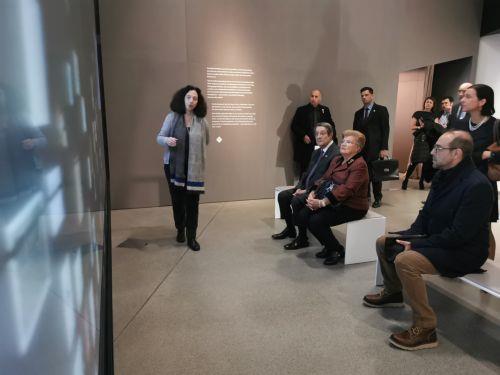
Leave a Comment